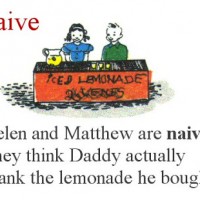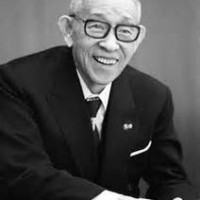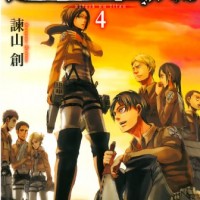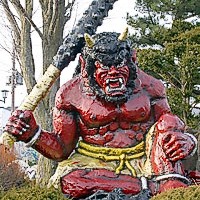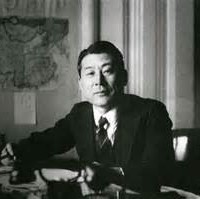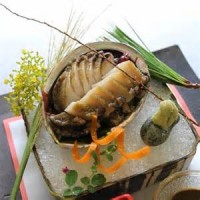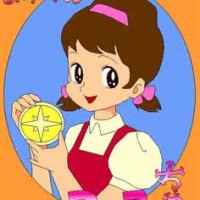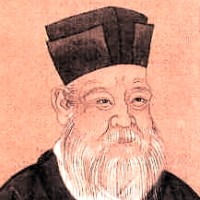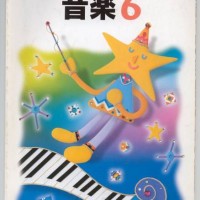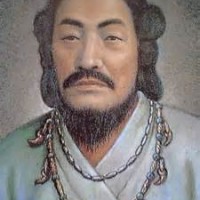Monthly Archives: October 2015
Monday: One Point Japanese Clinic
10/27/2015 blog
“Amainaa… (=You are naive.)” (A Good Example of “Naivety”) My husband and I had a big argument on parenting. We have 13-year-old and 11-year-old boys. As you could easily imagine, our 13-year-old always plays a computer game of any kind. He loves “killing games” with guns and other firearms. My hubby is very concerned about his son’s attitude, but recently he learned that there was a teenage sniper who killed whomever he didn’t like and his concern about his 13-year-old got to the climax. He screamed at me, saying, “Sooner or later, he will go and kill someone he hates. He’s got an anger issue. He doesn’t talk to me …
Friday: Japanese Hero
10/24/2015 blog
Matsushita Konosuke (The First Japanese Millionaire:https://en.wikipedia.org/wiki/Konosuke_Matsushita) Matsushita Konosuke (1894 – 1989) was a self-made artisan, founder of Panasonic “Kingdom”, and philanthropist. When he was young, he was an Edison, trying to make something useful “abundantly” for every Japanese. (Forked Socket) (Light Bulb) (Flash Light) While he was an artisan, his mission, he believed, was that he (and his company) will manufacture useful household products, which means that they would unload burdens from Japanese housewives, very inexpensively and abundantly. He used the word – like “running water.” Yes, that is exactly what he did, which made him the first millionaire in Japan. When he was asked what made him so successful, …
Thursday: Japanese Food
10/23/2015 blog
Kiritanpo (Akita) (Akita’s Local Favorite: https://en.wikipedia.org/wiki/Kiritanpo) (Authentic Way of Eating Kiritanpo) (Where is Akita?: https://en.wikipedia.org/wiki/Akita_Prefecture ) Let me begin talking about local favorites! Today’s cuisine is “Kiritanpo” from Akita Prefecture. Because of its location, they have harsh winter. So, they came up with the idea that they take advantage of the snow they have to make an igloo-kind building called “Kamakura.” (Their Winter is Harsh!) (People’s Wisdom – Kamakura) (Warm People Up: Nabe Ryori with Kiritanpo) (Fluffy Akita Puppy) (Local Festival) They live in deep snow every winter, but their ancestors have come up with great ideas for their offsprings – how to live with the local harsh weather in winter. That’s …
Wednesday: Japanese Manga (Japanese Cartoon)
10/22/2015 blog
Shingeki-no Kyojin/Attack on Titan (Original Comic Version) I didn’t know about this manga for a long time. In my facebook page, however, some of my friends started to mention it quite often, which drew my attention. I, partly because of my obligation that I have to know what my students/clients expect me to know, went to YouTube.com and watched its first episode… How negative! How gross! That was my first impression on this TV episode. What’s the point? Are the Japanese getting mentally sick? Probably so, unfortunately. This manga was started to appear in Shonen Magazine (Magazine for Young Boys) in 2009 and it spreaded out as TV series (still going!), …
Tuesday: Japanese Proverb (Nihon-no Kotowaza)
10/20/2015 blog
Oni-ni Kanabo (dearu) (*Oni and Kanabo #1) (**Oni and Kanabo #2) (***Real Warrior with Kanabo) Looking up a word “Oni” in the dictionary, you will find the meaning as an ogre, a goblin, a fiend, a demon, and a devil. No matter what the definition may be, Japanese “Oni” symbolizes “the powerful.” Humans have no chance to win! On the other hand, “Kanabo” means a spiked club or truncheon used in feudal Japan as a weapon by Samurai and their retainers (https://en.wikipedia.org/wiki/Kanab%C5%8D). As you can see in the pictures above, the entity with Kanabo looks really powerful. None of their enemies would ever try to challenge – That’s the combination …
Monday: One Point Japanese Clinic
10/19/2015 blog
Yoko Answers Your Questions! (International Marriage) Question #1: Is it alright for the Japanese to have a relationship with non-Japanese? Yoko’s Answer: That is NOT the issue of “alright or not.” Nobody, even parents, cannot prohibit their children from having relationships with non-Japanese. However, I will answer your question from traditional Japanese viewpoint. The Japanese people don’t want to have (or prefer not to have) non-Japanese in-laws. Among the Japanese, non-Japanese are called “GAIJIN” and are not supposed to be their family members. Still, they have been trained to be more open about their children’s spouses since there are a lot of opportunities for their children to meet “GAIJIN” inside or outside …
Friday: NEW SERIES!! Japanese Heroes
10/16/2015 blog
Sugihara Chiune (Senpo) – Japanese Schindler (Sugihara in his office in Lithuania) Sugihara Chiune (https://en.wikipedia.org/wiki/Chiune_Sugihara) was the Vice-Consul for the Empire of Japan in Lithuania during the WWII. He had spent a colorful life even up until then, but one action he chose to take as a human being, not as a diplomat, made him an international hero as well as a legendary Japanese hero – He wrote more than 6,000 visas “by hand” for Jewish refugees when he was on duty as the Vice-Consul at Lithuania. He took this action totally against the Department of Foreign Affairs. (You can see his signature in Japanese!) (“Sugihara made the decision as a …
Thursday: Japanese Food
10/13/2015 blog
Abalone (Awabi) (Abalone Sashimi) Abalones (https://en.wikipedia.org/wiki/Haliotis) are expensive! So, the Japanese don’t have them often in Japan. Occasional Food – that is what abalones are. Usually, abalones are served in a set menu along with other seafoods or meat. Here are some examples of those: (Did you spot abalones?) Personally, I love simple sashimi of abalones. Fresh abalones with freshly prepared wasabi (horseradish) – BLISS! However, people tend to get bored of one particular food, even abalones, pretty quickly, right? So, chefs of all kinds of cuisines have to come up with a new idea of cooking abalones like below: (Abalone Steak) (Chinese Dried Abalone Cuisine) (Abalone in French Style) (Abalone …
Wednesday: Japanese Manga
10/08/2015 blog
*Himitsu no Akko-chan (Magical Compact) **Akatsuka Fujio was a comedy cartoonist, actively released his cartoons 1956 through 2002. Most of his cartoons were very successful. Due to the nature of his cartoons, they were categorized as “Manga for Boys.” However, even girls in those days found his Manga so funny that lots of Akatsuka’s works were aired on TV. All of sudden, the cartoonist famous for boys’ magazines created “Himitsu no Akko-chan” – No one knows Akko’s secret. Akko is a nickname for Atsuko (most likely!). Himitsu means secrets. What was her secret? – Akko has a magical compact. She says, “Tekumaku Mayakon, Tekumaku Mayakon…. I will turn into an adult woman …
Tuesday: Japanese Proverb (Nihon-no Kotowaza)
10/06/2015 blog
Seishin Itto Nanigotoka Narazaran (Zhu Xi: https://en.wikipedia.org/wiki/Zhu_Xi) Zhu Xi (1130 – 1200) was one of the Son Dynasty (960 – 1279) Confucians and established his own school of Confucianism in China. Confucianism was introduced to Japan and was appreciated most in Edo Period. Notable Japanese scholars include Hayashi Razan (https://en.wikipedia.org/wiki/Hayashi_Razan). (Hayashi Razan) Hayashi Razan was not a scholastic thoroughbred, but his phylosophy based on Chinese Zhu Xi school served the Tokugawa Shogunate (https://en.wikipedia.org/wiki/Tokugawa_shogunate) supremely well. The proverb above came from Zhu Xi’s analects, which was published by his disciples. In Japanese-English dictionary, it is usually translated into English this way – “Where there’s a will, there’s a way.” There is, however, slight difference …
Monday: One Point Japanese Clinic
10/05/2015 blog
Music at School (Japanese Textbook in Music for 6th Graders) I was way too naive when my oldest son started to go to school at the age of 5. I thought everything would be fine, only from my experience back in Japan, as long as he attended some public school. Soon enough I figured out I was totally WRONG!! What makes me say that is, first of all, “music (class).” The Japanese takes it for granted that they know how to read music at Kindergarten level. They know clefs, keys, sharp, flat, major, minor, and you name it. All through their school years (K-12), they “study” music at (public) school. They …
Friday: Japanese Cosmology – Kojiki (「乞食」ではなく『古事記』ですヨ!!) #33
10/04/2015 blog
Second Emperor through Ninth Emperor (Emperor Suizei: Second Emperor of Japan) The part of Kojiki on Emperor Suizei (https://en.wikipedia.org/wiki/Emperor_Suizei) through Emperor Kaika (Ninth Emperor of Japan) is extremely boring because of its nature – genealogical description. I don’t think you can stand it. So, I will describe the genealogy in detail only when the important emperor or half-god shows up. This part of Kojiki is called “Kesshi Hachidai – Only Genealogical Description but Achievements of the Eight Emperors (https://ja.wikipedia.org/wiki/%E6%AC%A0%E5%8F%B2%E5%85%AB%E4%BB%A3).” Due to this “Kesshi Hachidai,” some historians of today maintain that there didn’t exist those eight emperors and that the author of Kojiki created “Kesshi Hachidai” to make the history of Japanese Royal Family …
Thursday: Japanese Food
10/04/2015 blog
Obento (Lunch Box) (Variety of Lunch Boxes) In Japan, middle school students and high school students take their lunch boxes to school. After getting tired of Kyushoku (School Meal – https://en.wikipedia.org/wiki/School_meal) at elementary school, they are so excited to have their home made food at school. Usually leftover from the previous night are to be used. Some examples: Leftover can be beautifully arranged and rice balls or the part of rice can be impeccably decorated! With a few more ingredients, the bento box can change into ART with lots of FUN!! (Serving Suggestions!?) To avoid “boredom,” a variety of …
Wednesday: Japanese Manga
10/01/2015 blog
Seeraa Muun (Sailor Moon) Enjoy the music! –> https://youtu.be/c0Va228UhRs (Music Jacket) (TV Version) The name of this Manga’s title came from “Sailor Suit” – Uniforms for middle/high school girls shown below: (Typical School Uniform For Fall and Winter) (For Spring and Summer) Each “warrior” wears her decorated costume devised from school uniforms like above. I know they look quite different from the reality because sailor suits those worriers wear are “costumes,” not uniforms after all. It is in 1992 that Sailor Moon came into the Manga market in Japan. Immediately its Manga version became a smash hit. TV shows, theatrical performances, toys and other character goods successfully followed, building one big franchise! …

